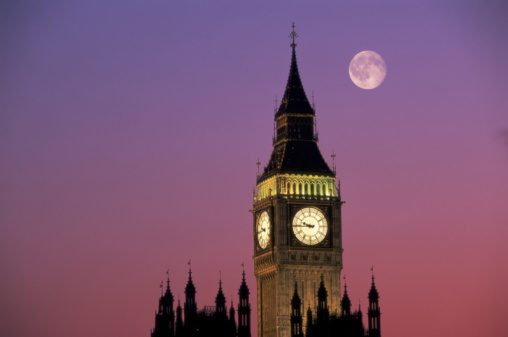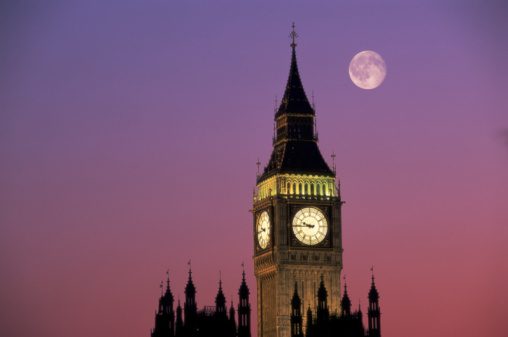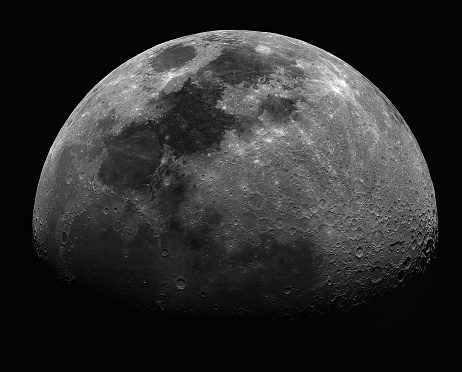The Moon will have a separate time zone by the end of 2026.
The White House has instructed Nasa to establish a ‘unified lunar time standard’ called Coordinated Lunar Time, or LTC (not CLT, which is confusing). Right now, when countries land on the Moon, they usually use their own time zone. However, not only does that make international missions difficult, time also operates differently on the Moon. This is because the Moon has less gravity, and where there is less gravity, time passes faster.
For a person on the Moon, an Earth-based clock will seem to lose an average of 58.7 microseconds per Earth day, according to Dr Arati Prabhakar of the White House Office of Science and Technology Policy (OSTP), who announced the plans.
She said that other periodic variations would cause Moon time to deviate further from Earth time.
However, having a time zone on the Moon would establish a system for a time-keeping reference for lunar spacecraft and satellites that need extreme precision for their missions. ‘An atomic clock on the moon will tick at a different rate than a clock on Earth,’ said Kevin Coggins, Nasa’s top communications and navigation official.‘It makes sense that when you go to another body, like the Moon or Mars, that each one gets its own heartbeat.’
Time operates differently on the Moon (Image: Getty)
Dr Prabhakar stated: ‘At the Moon, synchronising each lunar asset with an Earth-based time standard is difficult – due to relativistic effects, events that appear simultaneous at the Earth (for example, the start of a broadcast signal) are not simultaneous to an observer at the Moon.’
Nasa plans to send astronauts to the lunar surface from September 2026 through its Artemis programme, with the hopes that the US can establish a scientific lunar base that could help set the stage for future missions to Mars.
An OSTP official informed Reuters
The differences in time could also lead to errors in mapping and locating positions on or orbiting the Moon.
The official remarked: ‘Imagine if the world wasn’t syncing their clocks to the same time – how disruptive that might be and how challenging everyday things become.’
Clocks and time zones on Earth operate on Universal Coordinated Time (UTC), which is internationally recognized. However, it relies on a vast global network of atomic clocks placed in different locations around the world to measure changes in the state of atoms which creates an average to make a precise time.
Developing LTC may require atomic clocks to be placed on the Moon.
The European Space Agency proposed creating a standard lunar time last year, suggesting that a lunar day should last 29.5 Earth days and to create a common ‘LunaNet’ to cover lunar communication and navigation.
At the time, ESA navigation system engineer Pietro Giordano said: ‘During this meeting at ESTEC [the European Space Research and Technology Centre], we agreed on the importance and urgency of defining a common lunar reference time, which is internationally accepted and towards which all lunar systems and users may refer to.’
However, implementing Coordinated Lunar Time will require international agreements, the memo said, through ‘existing standards bodies’ and among the 36 nations that have signed a pact called the Artemis Accords, which regulates how countries can act in space and on the Moon.
China and Russia, the two main rivals to the US in space, have not signed the Artemis Accords.
Creating a standard lunar time was also proposed by the European Space Agency last year, where they suggested that a lunar day should last 29.5 Earth days and to create a common ‘LunaNet’ to cover lunar communication and navigation.
At the time, ESA navigation system engineer Pietro Giordano said: ‘During this meeting at ESTEC [the European Space Research and Technology Centre], we agreed on the importance and urgency of defining a common lunar reference time, which is internationally accepted and towards which all lunar systems and users may refer to.’
However, implementing Coordinated Lunar Time will need international agreements, the memo said, through ‘existing standards bodies’ and among the 36 nations that have signed a pact called the Artemis Accords, which regulates how countries can act in space and on the Moon.
China and Russia, the two main rivals to the US in space, have not signed the Artemis Accords.











